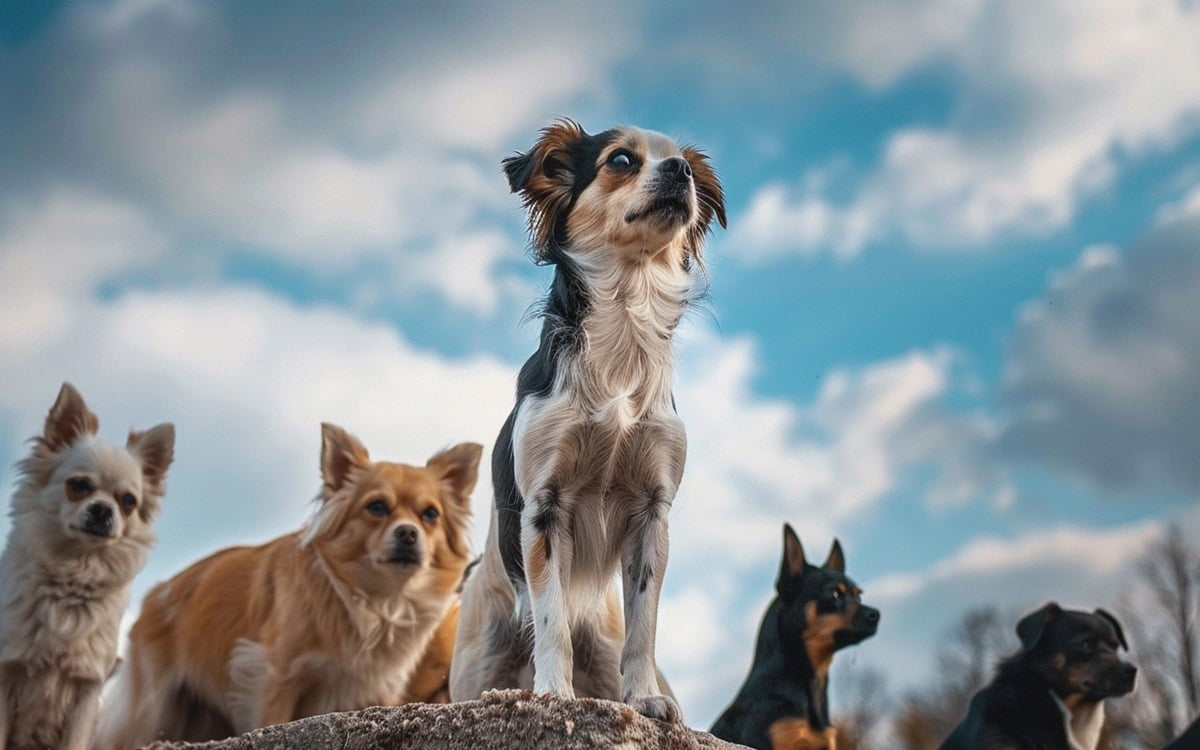Imagine a scene with a feisty Chihuahua boldly commanding a bewildered Great Dane. Ridiculous, right? Yet, breed stereotypes about alpha dogs would have us believe this is how the canine world works! But here’s the thing: Queen Jezebel, a fierce Basset Hound known to rule the royal palace, proved that size and breed don’t dictate a dog’s leadership abilities. So, if being “alpha” isn’t about breed, what is it about? Let’s dive in and unveil the real truth about those so-called alpha dog breeds.
Debunking the Alpha Dog Myth
Let’s get one thing straight: that whole “alpha wolf” idea everyone used to toss around when talking about dog training? Yeah, it’s mostly been debunked. Turns out, scientists studying wolves (back when they thought wolves fought for top-dog status) were actually observing captive, stressed-out animals. In reality, wolf packs function more like families! They work together, share responsibilities, and don’t necessarily have one single, all-powerful leader.
Just like their wolf cousins, our dogs have complex relationships. Sure, some dogs might be bolder or more assertive than others, but that doesn’t automatically make them Alpha Dog. Think of it like a classroom: some kids may be more outgoing, but that doesn’t mean they rule the school!
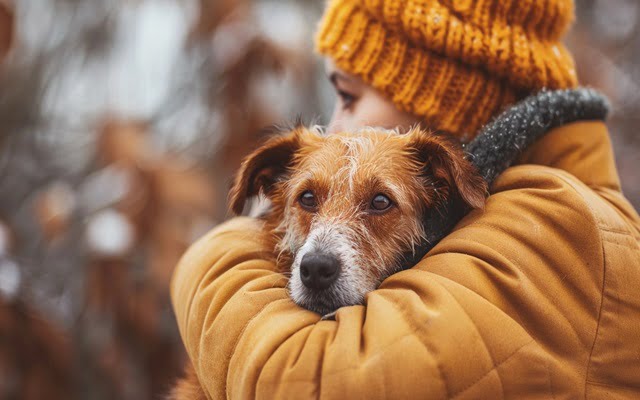
Beyond Breed: Factors Shaping Canine Behavior
Okay, so if being an “alpha” isn’t about breed, what does influence how our dogs act? Well, it’s a mix of things:
- Breed Tendencies: Let’s be real, some breeds were developed for specific jobs. Retrievers gonna retrieve, terriers gonna dig, and herding dogs might try and herd you around the family room. But it’s important to remember that these are just tendencies, not unbreakable rules. Plenty of Golden Retrievers would rather fetch a nap than a tennis ball!
- Genetics and Individuality: Just like us, dogs are born with unique personalities. Some are naturally more confident, others a bit more timid. It’s also why two Lab puppies from the same litter can grow up with totally different personalities.
- Training and Socialization: This is a HUGE one! Think of dogs like sponges; they soak up everything we teach them (and everything we accidentally don’t). Positive reinforcement training, where we reward the behaviors we like, is like magic for building a dog’s confidence and teaching them how to navigate the world. Socializing dogs when they’re young – meaning introducing them to all sorts of new people, places, and other dogs safely – helps them understand that the world isn’t so scary.
Unveiling the Real Leaders: Beyond Breed Stereotypes
It’s time to rethink what it means for a dog to be a “leader.” Being in charge isn’t about barking orders or intimidating anyone. True leadership, for both dogs and humans, is about clear communication, setting boundaries, and being reliable.
Sometimes, those “dominant” behaviors we see in dogs (barking, lunging, etc.) might actually be rooted in fear or anxiety. Imagine always being on high alert – pretty exhausting, right? And if your dog is always worried about what will happen next or feels like they need to protect themselves (even from something harmless, like your neighbor’s friendly cat!), that’s going to come out in their behavior.
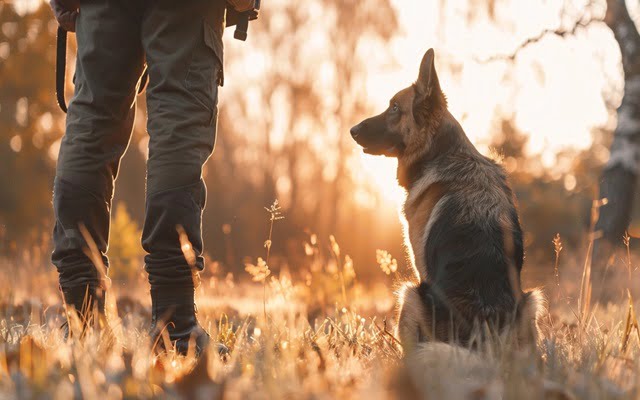
Building a Strong Partnership: Positive Leadership for All Dogs
So, how do we build that awesome bond with our dogs and be the kind of leaders they deserve? It all comes down to a few key things:
- Respect:Our dogs aren’t furry robots. They have feelings, needs, and preferences too. Just like we want them to respect our rules, we need to respect them as individuals.
- Positive Reinforcement:Ditch the punishments and focus on rewarding the good stuff! When your dog sits politely instead of jumping, give them a treat and some praise. They’ll quickly learn that good behavior gets them what they want.
- Consistent Boundaries:Dogs thrive on routine and knowing what’s expected of them. Be consistent with your rules and expectations. No couch cuddles? Stick to it! Confusing your dog with changing rules leads to frustration for both of you.
- Patience is Key:Training takes time, and there will be slip-ups. Don’t get discouraged! Just keep rewarding the good behaviors, and those less-desirable ones will eventually fade away.
- Clear Communication:Dogs are masters of reading body language. Use your own body language to communicate with your dog clearly and calmly. Avoid looming over them or using a harsh tone of voice, as this can escalate their anxiety.
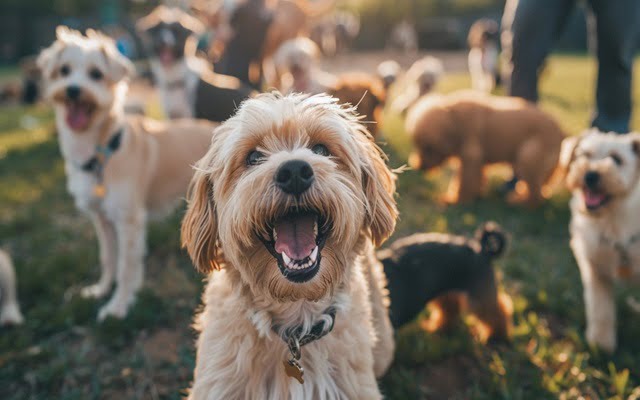
Practical Tips for Everyday Situations
Here are some everyday scenarios where these leadership principles come into play:
- Leash Pulling: Instead of yanking back, try stopping and standing still, or changing direction when your dog pulls. This teaches them that pulling gets them nowhere. Remember, patience is key!
- Jump-Ups: Ignoring the jumping and rewarding calm greetings with attention and treats teaches your dog that four paws on the floor is the way to go.
- Resource Guarding: Resource guarding: This is a complex issue that often stems from anxiety. Consult a qualified trainer for individual help, but start by teaching your dog that people approaching their food or toys means good things. More will come to them, not that they will lose something. Or you can also join famous dog training or health monitoring apps on communities like Woofz App or a few other apps to understand and train your dog more thoroughly.
The Power of Body Language
Dogs are experts at reading our subtle cues. Understanding some basic canine body language helps us communicate effectively:
- Whale Eye:When your dog shows the whites of their eyes, it could be a sign that they’re feeling stressed or uncomfortable. Give them space if you see this.
- Tail Talk:A high, wagging tail usually means happy, but a low or tucked tail might indicate fear or uncertainty.
- Play Bow:That classic ‘butt in the air, front paws down’ pose is a friendly invitation to play!
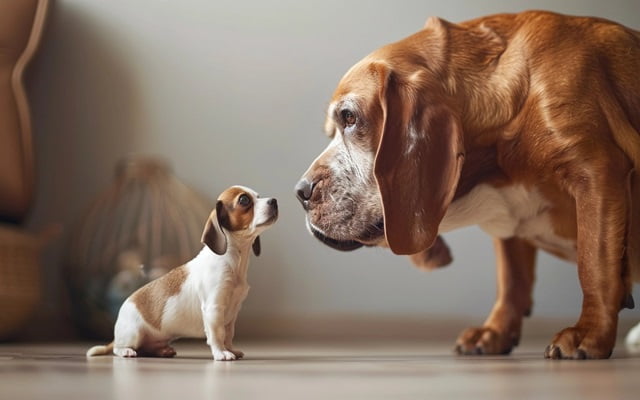
Conclusion
So, there you have it! There’s no magical breed that produces “born leaders.” Dogs, like us humans, are complex individuals. Leadership comes from building a relationship founded on trust and understanding, not outdated ideas about dominance.
Remember, the best way to raise a confident, well-behaved dog is through patience, respect, and focusing on all the awesome things your dog does right. Ditch the Alpha Dog label and celebrate your dog’s unique personality! If things get a little challenging, don’t hesitate to seek help from a qualified, positive reinforcement trainer. Trust me, both you and your furry friend will be glad you did.
FAQ
Can a female dog be an alpha, even over a male dog?
Absolutely! The idea of a single “alpha” dog is outdated. Dogs have complex social structures, and leadership roles can change depending on the situation. Gender doesn’t dictate a dog’s ability to be assertive or take charge. Focus on building a positive relationship with your dog, regardless of their gender.
My small dog is bossier than my large dog – how can this be?
This proves that size doesn’t equal personality! Smaller dogs can be just as confident (sometimes even more so) than bigger ones. Positive training and meeting your little dog’s needs can help them express their leadership potential in healthy ways.

My job is to make sure every fact is right and every article is a joy to read. I’m kind of like a dog trainer for information – I make it behave!

